Arab American Giving: Vibrant, Evolving, and Part of a Long History in the U.S.
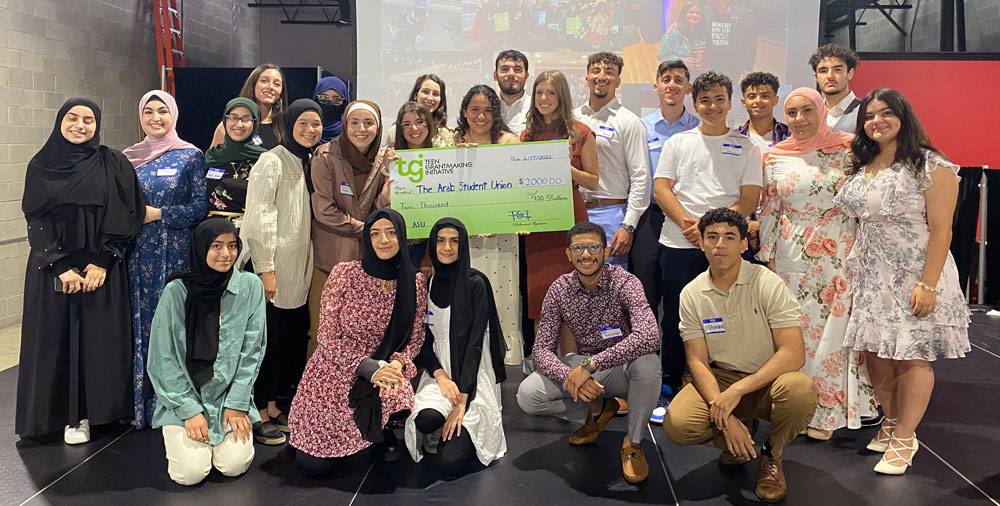

For decades, the Arab American story that has frequently been highlighted in the media and public forums has been based on falsities and stereotypes. Fortunately, we are experiencing a surge of Arab American visibility and representation, including President Biden’s 2023 proclamation of April as Arab American Heritage Month, hopefully reversing the oversimplification of a community that includes more than 20 nationalities and many religious groups, represented across the generations.
A part of this story that is worth uncovering is the impact of Arab American philanthropy, but before exploring that, we must further examine why Arab American history is so misunderstood.
The earliest Arab immigrants to the United States can be dated back to the late 1800s, most of them arriving from the Ottoman Empire’s Greater Syria (modern-day Syria, Lebanon, Palestine, and Jordan). Early immigrants established a flourishing enclave in New York City called Little Syria, where Arab business, family life, and art thrived. The neighborhood became home to some of the most prominent Arab American icons, such as respected writers Kahlil Gibran and Ameen Rihani.
Although we have an idea of how many Arab Americans have lived in the United States throughout history (current estimates say nearly 3.7 million Americans have Arab heritage) it’s impossible to determine an exact number because of the absence of an accurate race/ethnicity checkbox on federal documents.
For decades, Arab Americans have had little choice but to identify as white for government and other “official” purposes. Several court cases relating to naturalization in the early 1900s denied citizenship to Arab immigrants based on the notion that they were “non-white”; whiteness being a requirement for naturalization as laid out in the Naturalization Act of 1790. In 1915, the Fourth Circuit Court of Appeals reversed that policy. Syrian immigrant George Dow was granted citizenship on the basis that “inhabitants of a portion of Asia, including Syria, [are] to be classed as white persons.” Without an alternative — without the ability to identify as MENA on the Census and in other accountings — Arab Americans have remained subsumed within the category of “white” ever since.
“The lack of formal recognition of MENA populations in the U.S., coupled with the proliferation of misconceptions about MENA communities … has created a false, problematic narrative about Arab Americans.”
The lack of formal recognition of MENA populations in the U.S., coupled with the proliferation of misconceptions about MENA communities nourished by the War on Terror, has created a false, problematic narrative about Arab Americans. This narrative is devastating and overlooks the long history and contributions of Arabs in the U.S.
However, there is reason for hope moving forward. Although the U.S. Census Bureau failed to add Middle Eastern/North African (MENA) to the 2020 Census survey, activists are pushing for its inclusion in the 2030 Census. To learn more about how you can support MENA visibility in federal and state data, see the recent blog, “Making MENA Visible,” by Dr. Claudia Youakim.
Examples of Arab American philanthropy can be traced back to when the first immigrants from the Arab world arrived. In Crossing the Waters: Arabic-speaking immigrants to the United States before 1940, E.J. Hooglund captures one such example of early community organizing. In 1917, Hannah Sabbagh Shakir founded the Society for Relief of Syria and Lebanon in Little Syria to help bring relief to communities back home who were suffering through World War 1.
Twenty-seven women banded together to launch a door-to-door membership campaign, securing over 250 memberships at the cost of only five cents a week. The community of women spearheaded grassroots fundraising efforts, such as posting donation boxes outside local businesses and selling their needlework.
Eventually, the organization decided to pivot its focus to supporting the local Arab American community, and in July 1918, the group was renamed the Syrian Ladies’ Aid Society of Boston (Hooglund, 1987). Although Little Syria no longer exists, the legacy of its trailblazers is embodied in Arab Americans today.
To help provide a current snapshot of Arab American giving, the Center for Arab American Philanthropy (CAAP), established as the nation’s first and only Arab American community foundation in 2010, published A Tapestry of Giving in 2022. CAAP is the only institution that has ever conducted research on Arab American philanthropy. This research report explores giving within the community, based on results from a questionnaire survey and various focus group discussions.
A Tapestry of Giving is not only an examination of trends and behaviors but also an endeavor to reclaim the narrative and highlight that Arab Americans are giving back to their communities. The research report is organized around nine themes of Arab American giving, including the following:
1. Trust is Everything
One of the report’s findings is the significance of trust in Arab American giving, especially institutional trust. More particularly, in a post-9/11 setting, when many Arab Americans feel heavily targeted and surveilled by institutions, they especially place a premium on trust in any organization.
According to the research study, 53% of survey respondents are more willing to help an organization if their friends ask than if the organization asks. “If it’s an organization I don’t know much about, I might reach out to those I trust to ask, ‘What do you know about this organization?’,” shared one respondent. Another respondent focused on organizational leadership: “Who runs the organization, and their track record, is a big factor for me. We look at the structure, who is doing the work.”
Many respondents are committed to giving back to communities they tie their lineage to, especially in areas affected by war, poverty, and political instability. Several respondents shared that it’s challenging to find reputable and transparent organizations that do on-the-ground work in the Middle East. Many individuals lean on their personal relationships and send support directly to individuals and families they know who are in need.
One respondent mentioned their challenges with supporting rebuilding efforts after the 2020 Beirut port explosion, sharing their distrust in Lebanese banks to process the donations. They resorted to sending the money in batches with individuals who they knew were traveling to the country.
2. A Sense of Obligation and Paying it Forward
Both Muslim and Christian Arab respondents say their giving is somewhat influenced by their religious duties. Regardless of religious background, respondents linked their giving to their Arab identity, referencing an emphasis on supporting the pan-Arab community, no matter their nationality, sect, or affiliation. Eighty-five percent of respondents agree with the statement, “I feel it is my responsibility to support organizations that positively impact people in the Arab American community.”
“Regardless of religious background, respondents linked their giving to their Arab identity, referencing an emphasis on supporting the pan-Arab community[.]”
Results from the survey heavily demonstrate that Arab Americans are making an impact in the U.S., with over 86.6% saying that in the last three years, they gave to causes in their local community. More than half of the survey respondents gave most or all their giving in the United States, while less than 25% did most or all of their giving overseas.
“I’ve had a really lucky life in a lot of ways. I don’t live in poverty; I don’t live in a refugee camp. I’m tremendously thankful for that, and to have education and health care,” said one participant. Inspired by a sense of appreciation for the lives they’re living, several respondents expressed feeling a responsibility to help communities affected by political and economic instability in places like Lebanon, Syria, Yemen, and Palestine.
One respondent shared their experience escaping the Gulf War and receiving asylum in the United States. They described feeling embraced by the community that took their family in and particularly noted that many individuals who supported them were non-Arab. This highlights the power of philanthropy to build bridges among diverse communities.
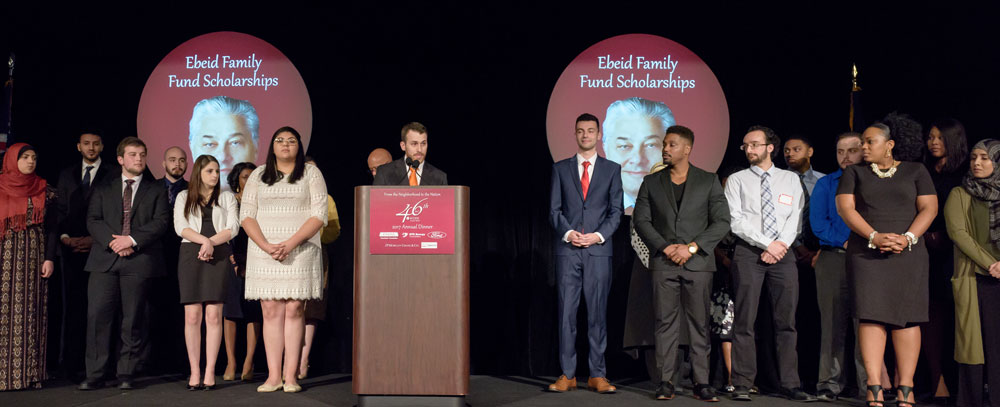 PHOTO: Ebeid Family Fund Scholars being honored in 2017
PHOTO: Ebeid Family Fund Scholars being honored in 2017
Participants also frequently highlighted scholarships as a critical area for their giving, often attributing their personal and professional success to receiving an education. One of the nation’s most successful Arab American scholarship funds is the Ebeid Family Fund housed at CAAP, which honors the legacy of Arab American businessman and philanthropist Russell J. Ebeid. The fund has provided scholarships totaling $585,250 to students studying engineering and STEM-related fields at various higher education institutions in Michigan and Ohio.
3. Giving by Generation
CAAP’s research report identifies a common thread of Arab Americans acquiring their commitment to giving from a role model, typically their parents. Several respondents cited their parents’ immigration stories, or even their own, and how that rooted their sense of wanting to give back. One respondent shared, “I’m following in my father’s footsteps. He’s been my inspiration in that regard, and it feels good at the end of the day.”
Another notable finding of the report relates to the giving behaviors of Arab Americans as it evolves across generations. Younger respondents (ages 20–39) were more likely to agree that their giving is driven more by emotion. Young respondents are also more likely to identify with the title, “philanthropist.” One respondent shared, “I learned that philanthropy doesn’t matter what the amount is, you can start with what you can afford and you’re better to start from anywhere than do nothing.” Whereas another individual expresses more resistance to the title philanthropist: “I don’t think I give enough money to earn that term philanthropist. I don’t give enough talent or treasure or time, all three, to be a philanthropist.” Some respondents felt that the title is loaded and possibly pretentious.
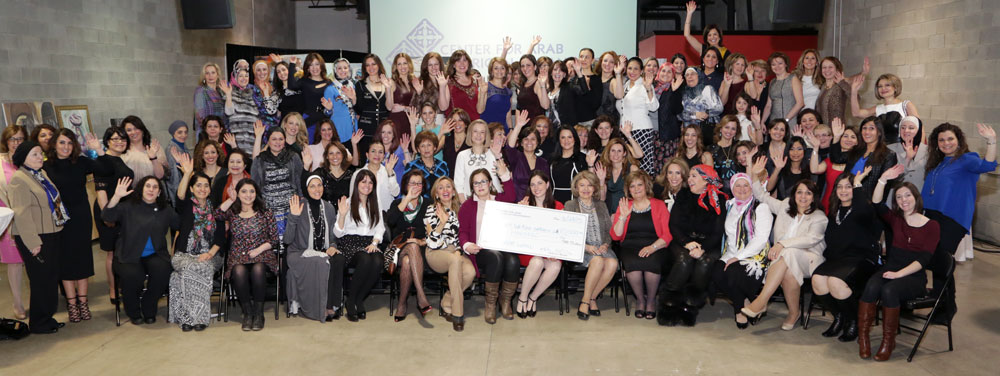
PHOTO: CAAP’s 100 Arab American Women Who Care giving circle based in Dearborn, Mich. The group has granted more than $80,000 to Michigan nonprofits in their 10 years of giving.
The report shows that Arab American immigrants and the children of immigrants are more likely to give to organizations that provide direct services than individuals whose families have been in the U.S. for several generations. Immigrants and their children have firsthand experience with the challenges of acclimating to a new nation and acquiring access to basic services, which may help explain this pattern.
The longer a donor’s family has lived in the United States, the more likely they were to give more in the U.S. than in other countries compared to those who are recent immigrants. If we look back to the evolution of the Syrian Ladies’ Aid Society in the early 1920s, we see this pattern can be found even in the earliest forms of Arab American philanthropy. It’s clear that as Arab Americans put down roots in the U.S., they want to contribute in a positive way to their local community.
A community that once had to misidentify itself as “white” for citizenship, is today carrying pride in its Arab roots and in everything it contributes to all sectors of American society. When we research our philanthropic story, we shed light on the fact that our legacy not only brings “something to the table” but actually helped build that table.
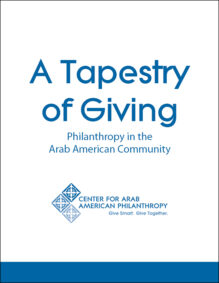 LEARN MORE
LEARN MORE
To continue exploring the current state of Arab American giving, read the full report, Tapestry of Giving: Philanthropy in the Arab American Community, from the Center for Arab American Philanthropy.
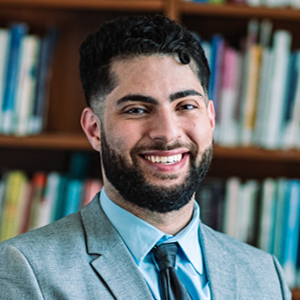
Hooglund, E. J. (1987). Crossing the waters: Arabic-speaking immigrants to the United States before 1940. Smithsonian Institution Press.